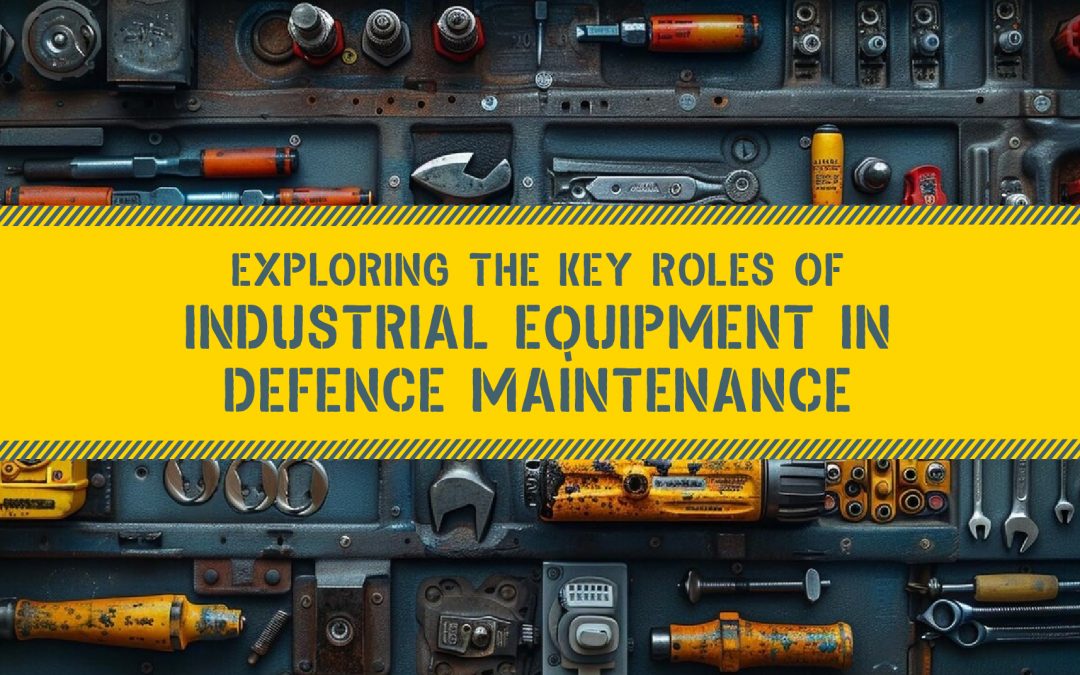In the realm of defence, the maintenance and operational readiness of equipment are paramount. Ensuring that military assets such as vehicles, aircraft, and naval vessels are in peak condition requires a concerted effort, supported by sophisticated industrial equipment. These tools and machinery play a critical role in facilitating the repair, refurbishment, and upgrading of defence systems, thereby enhancing the overall effectiveness and reliability of military operations. For those looking for a trusted source of such essential tools, companies like Bendtech Defence provide a comprehensive range of specialized industrial equipment tailored for defence needs.
Heavy-Duty Lifting and Handling Equipment in Defence Maintenance
One of the fundamental aspects of defence maintenance is the ability to lift, move, and position heavy machinery and components safely and efficiently. This is where heavy-duty lifting and handling equipment comes into play. Cranes, hoists, and hydraulic lifts are indispensable for managing the substantial weight of military vehicles, aircraft engines, and naval components.
These machines are designed to handle extreme loads while ensuring precision and safety. For instance, the use of gantry cranes in aircraft maintenance facilities allows for the careful positioning of large sections of aircraft for inspection, repair, and assembly. Similarly, in naval yards, massive ship lifts and dry docks are essential for performing hull repairs and maintenance on submarines and surface ships.
Precision Machining in Component Repair and Fabrication
Defence maintenance frequently involves the repair and fabrication of complex components. Precision machining tools, such as CNC (Computer Numerical Control) machines, lathes, and milling machines, are critical in this regard. These tools allow for the accurate machining of components to exact specifications, ensuring that repaired or newly fabricated parts meet the stringent standards required for military applications.
CNC machines, in particular, have revolutionized the way components are manufactured and repaired. Their ability to produce intricate parts with high precision and repeatability makes them invaluable in defence maintenance. Whether it’s producing engine components, weapon system parts, or intricate electronic housings, the precision offered by CNC machining ensures that every part performs reliably under demanding conditions.
Advanced Diagnostic and Testing Instruments for Reliability and Safety
The reliability and safety of military equipment hinge on thorough and accurate diagnostics and testing. Advanced diagnostic tools, such as non-destructive testing (NDT) equipment, play a crucial role in identifying potential issues before they become critical failures. NDT methods, including ultrasonic testing, radiography, and magnetic particle inspection, allow maintenance personnel to detect cracks, corrosion, and other defects in critical components without causing damage.
Testing instruments such as dynamometers and vibration analysis tools help in assessing the performance and health of mechanical systems. For example, dynamometers are used to measure the power output of engines and motors, ensuring they operate within specified parameters. Vibration analysis tools, on the other hand, help in identifying imbalances and misalignments in rotating machinery, preventing potential failures.
The Role of Robotics and Automation in Defence Maintenance
Robotics and automation are increasingly becoming integral to defence maintenance operations. Automated systems and robotic arms are used for tasks that require high precision, repeatability, and safety. For example, robotic arms equipped with welding tools can perform consistent and high-quality welds on aircraft frames and ship hulls, reducing the time and effort required for manual welding.
Automated guided vehicles (AGVs) transport heavy components and tools within maintenance facilities, streamlining logistics and reducing physical strain on personnel. Drones, equipped with high-resolution cameras and sensors, inspect hard-to-reach areas of military assets like bridge undersides and tall structures. These technologies provide detailed visual and thermal data for maintenance planning.
The Impact of Digital Technologies and Predictive Maintenance
Digital technologies and predictive maintenance have revolutionized defence maintenance. Using the Internet of Things (IoT), big data, and artificial intelligence (AI), maintenance teams can predict and prevent equipment failures. IoT sensors in military assets monitor parameters like temperature, vibration, and pressure, sending real-time data to centralized systems.
AI algorithms analyze this data to identify patterns and anomalies, predicting potential failures and recommending preventive actions. This shift from reactive to proactive maintenance not only improves the reliability and availability of military equipment but also reduces maintenance costs and downtime.
Enhancing Maintenance Skills and Efficiency
Effective maintenance of defence equipment also relies heavily on the skills and expertise of maintenance personnel. Training and simulation tools are essential for equipping technicians with the knowledge and hands-on experience they need to perform complex maintenance tasks. Advanced simulators and virtual reality (VR) environments allow technicians to practice maintenance procedures in a safe and controlled setting.
These training tools can replicate various scenarios and equipment types, providing valuable experience without the risk of damaging actual military assets. For example, a VR simulator can mimic the conditions of repairing an aircraft engine, allowing technicians to practice disassembly, inspection, and reassembly procedures. This hands-on training enhances their skills and confidence, leading to more efficient and effective maintenance operations in the field.













